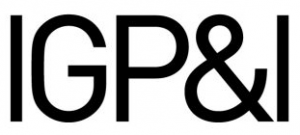The English High Court’s decision in the case of the MSC FLAMINIA provides useful guidance on which claims are subject to limitation, and which are not.

Limitation of liability – lessons from the MSC Flaminia
Written by
Oliver Goossens
In September 2023, the Court of Appeal handed down judgment in the case of the MSC FLAMINIA. This is only the second time in 20 years that a court has considered an attempt by charterers to limit their liability to owners under the Convention on Limitation of Liability for Maritime Claims (LLMC).
The Flaminia casualty
The containership MSC FLAMINIA was on its way from South Carolina to Antwerp in July 2012, when mid-Atlantic, an explosion on board led to a severe fire. Three crew members lost their lives and hundreds of containers were destroyed. The explosion was caused by the auto-polymerisation of a chemical called DVB which was stored in some of the containers.
The owners of the vessel, Conti, brought proceedings against their charterers, MSC. The owners’ claims consisted of various salvage and casualty expenses and the hire which the charterers had deducted for the entire period during which the ship was out of service under the time charter. The time charter claims were arbitrated and the charterers were found to be in breach of their Hague-Visby and other contractual obligations regarding dangerous cargo; the owners were awarded damages of approximately USD 200 million.
The charterers sought to limit their liability under the LLMC to the applicable tonnage limitation figure of the vessel. If they were successful, the charterers would be able to limit their liability to around GBP 28 million (about USD 35 million at the time).
Damages after the explosion and fire onboard the MSC Flaminia. Photo: Central Command for Maritime Emergencies
The first High Court decision
The decision reached in the first instance was that the owners’ claims were not subject to limitation. That was because all of the owners’ claims were ultimately categorised as the cost of repairing the ship and returning her to the service under the charterparty. Although there were many items of expenditure, those claims could be characterised as a single claim for damage to the ship and such claims are not subject to limitation under the LLMC. Furthermore, even if the groups of claims were analysed individually, none were limitable.
The Court of Appeal
This decision was appealed by the charterers. They claimed that it was wrong to categorise owners’ liability as a single claim in respect of damage to the ship, as opposed to a group of claims, some which could be subject to limitation and some which could not.
There was a significant raft of additional costs including:
i) the costs of discharging and decontaminating the cargo, ii) the costs of removing firefighting water from the vessel’s holds, iii) the payments made to national authorities; and iv) the cost of removing the burnt waste material from the ship, which the charterers believed were subject to limitation under the LLMC. Article 2 (1) (a), (e) and (f) of the LLMC permit limitation with regard to:
“(a) Claims in respect of loss of life or personal injury or loss of or damage to property (including damage to harbour works, basins and waterways and aids to navigation), occurring on board or in direct connexion with the operation of the ship or with salvage operations, and consequential loss resulting therefrom [...]
(e) Claims in respect of the removal, destruction or the rendering harmless of the cargo of the ship;
(f) Claims of a person other than the person liable in respect of measures taken in order to avert or minimize loss for which the person liable may limit his liability in accordance with this Convention, and further loss caused by such measures.”
Owners rejected this argument on the simple basis that Article 2 of the LLMC must be interpreted to exclude claims by an owner against a charterer brought for loss suffered by the owner itself. Whilst the LLMC 1976 was extended to include charterers as a party entitled to limit liability, this inclusion did not serve to allow charterers the right to limit claims brought by the owners for their own losses and it would be contrary to the general objectives which underpin the limitation regime. It would be a strange interpretation of the LLMC if the owners’ own claims were paid out of a limitation fund constituted by the owners themselves, to the detriment of other claimants bringing claims on the fund.
The Court of Appeal made reference to the Travaux Préparatoires of the LLMC, the purpose of the LLMC and the existing case law and agreed with the owners’ submission.
More clarity for owners and charterers
This is only the second time in over 20 years that the Court has given guidance on charterers’ rights to limit their liability against owners’ claims under the LLMC. The previous Court of Appeal finding in the CMA DJAKARTA (and the obiter comments from the Supreme Court in the OCEAN VICTORY) have been upheld – that is to say that the charterers cannot limit the owners’ claims arising from damage to the ship which is subject to the limitation fund.
The upshot is that owners and charterers now have greater clarity on the workings of the LLMC and its application in practice. Owners will have some reassurance that in the case of large casualties, where owners’ losses may likely exceed the limitation limit under the LLMC, charterers will not be able to limit liability for losses suffered by owners themselves however they are categorised.
This judgment provides a helpful clarification and reminder of what claims can and cannot be limited in these circumstances. The key is the type of claim being brought against the charterers. If the owners are claiming for a loss which the owners have suffered themselves, the charterers have no right to limit their liability. But if owners are passing on liability for a claim made against the owners by a third party (cargo claims or personal injury claims brought in relation to the crew for example), charterers are entitled to limit.
This reconfirmation will be welcomed by the industry as a whole, although we must wait to see whether the Supreme Court gives the charterers permission to test this application of the LLMC one final time.
We would like to thank Adrian Moylan, Vice President at Gard, and Kim Jefferies, Special Adviser at Gard for their inputs to this article.


